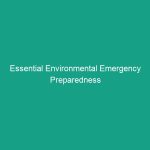Good Morning Team!
Today, we’re going to talk about an incredibly important topic – Essential Train Safety Guidelines: Avoid Common Risks & Stay Safe! Safety is not just a protocol; it’s a culture that we all need to embrace to ensure our well-being and that of our colleagues. Understanding these guidelines can make a significant difference in our daily operations and overall Safety at work.
Understanding Essential Train Safety Guidelines
Train safety guidelines encompass the practices and Procedures designed to minimize the risks associated with operating and working near trains. These guidelines are crucial in preventing accidents, injuries, and fatalities in the workplace. Common misconceptions include the belief that train operations are inherently safe or that Safety Measures are unnecessary if one is cautious. However, awareness and adherence to safety protocols are vital, as they ensure that everyone goes home safely at the end of the day.
Key Hazards, Risks, and Safety Considerations
Working around trains comes with its unique set of Hazards and risks. Here are some key points to consider:
- Moving Trains: The primary risk is the presence of moving trains. Many incidents occur when individuals are in the path of an oncoming train.
- Equipment Hazards: Train stations and Maintenance areas have heavy machinery and tools that can pose a risk if not handled properly.
- Environmental Conditions: Weather conditions like rain, snow, and fog can reduce visibility and create slippery surfaces.
- Human Error: Distractions or lack of proper Training can lead to mistakes that could result in accidents.
Ignoring these safety protocols can lead to severe consequences, such as injuries, legal repercussions, and even fatalities. It’s crucial for every employee to understand these risks and actively work to mitigate them.
Best Practices, Procedures, & Actionable Advice
Now that we understand the risks, let’s discuss Best Practices and actionable advice to stay safe:
1. Always Be Aware of Your Surroundings
Situational awareness is key. Always be alert for trains and other moving equipment. Before crossing tracks, look both ways, and ensure no trains are approaching.
2. Use Designated Crossings
Only cross tracks at designated crossings. These areas are equipped with safety features like lights and gates. Never attempt to cross tracks when warning signals are active.
3. Wear Appropriate Personal Protective Equipment (PPE)
Always wear your PPE, including hard hats, high-visibility vests, and safety boots. This equipment can significantly reduce the risk of injury.
4. Follow Training and Safety Protocols
Participate actively in safety training sessions. Understanding the procedures can help you respond effectively in emergencies.
5. Report Unsafe Conditions
If you notice any unsafe conditions or behaviors, report them immediately. A proactive approach can prevent accidents before they happen.
Case Study: The Importance of Adherence
In a recent incident at a train station, an employee ignored the warning signals and entered a designated crossing area. Fortunately, quick thinking by a colleague who shouted a warning prevented a serious accident. This incident highlights the importance of following safety protocols at all times.
Regulations, Standards, and Compliance
It’s essential to comply with relevant safety Regulations, including OSHA Standards and company-specific safety protocols. Compliance is not just about avoiding fines; it’s about protecting you and your coworkers. Understanding these regulations empowers you to advocate for a safer workplace.
Employee Engagement & Discussion
Now, let’s open up the floor for discussion. Here are a few questions to consider:
- What safety challenges have you encountered related to train operations?
- Can you share an experience where you or a colleague followed safety guidelines that prevented an accident?
- What additional resources do you think we need to enhance safety around train operations?
Conclusion & Key Takeaways
In conclusion, adhering to Essential Train Safety Guidelines is critical in avoiding common risks and ensuring a safe working Environment for everyone. Remember to stay aware of your surroundings, use designated crossings, wear PPE, follow safety protocols, and report unsafe conditions. By prioritizing safety, we not only protect ourselves but also our colleagues.
Thank you for your attention and commitment to safety. Let’s continue to work together to create a safe and healthy workplace!


